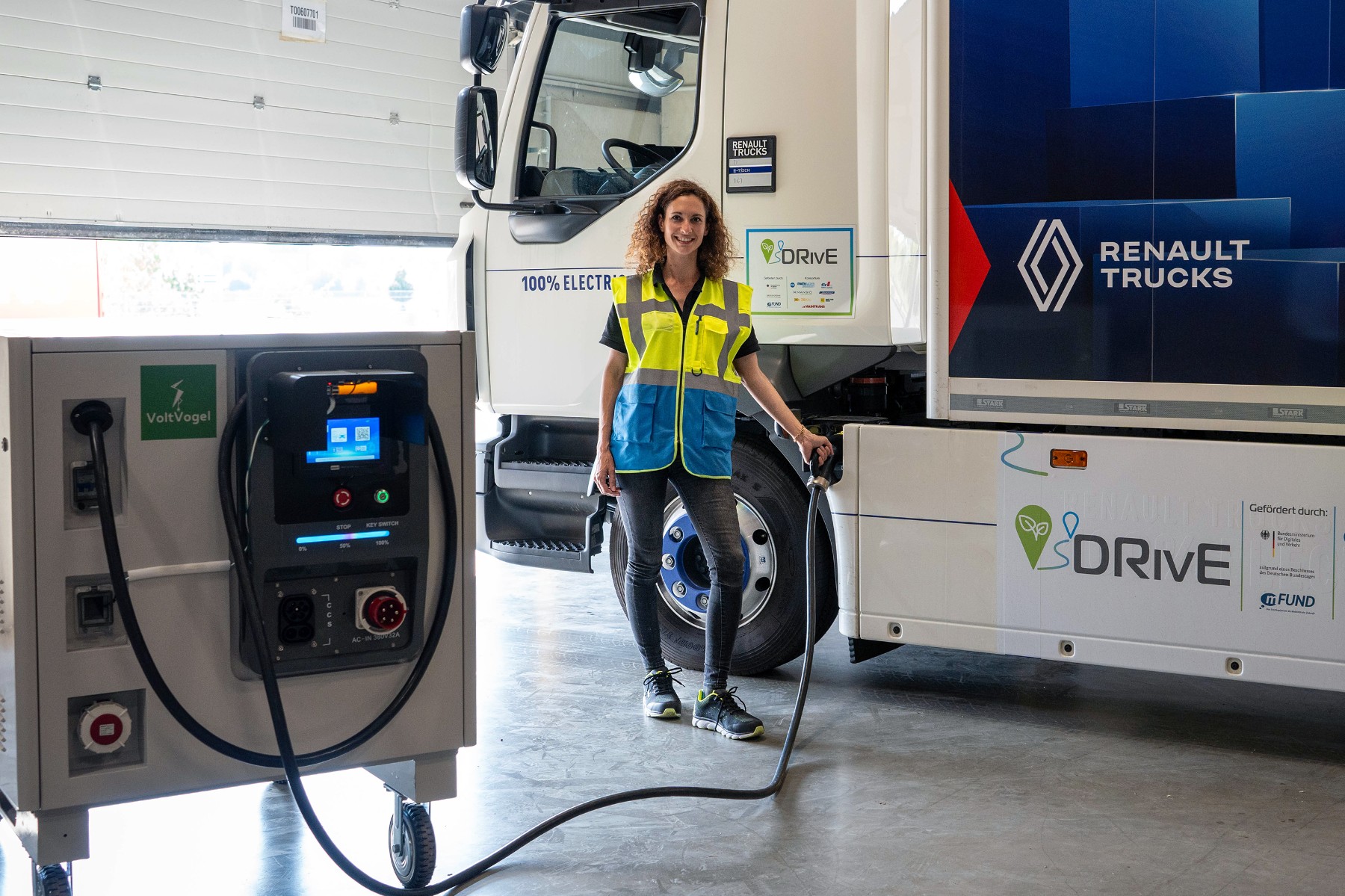PEM makes progress in route planning software for electric trucks


'DRivE' stands for "Data-Based Route Planning in Road Freight Transport with Different Energy Supply Technologies" and will continue until the end of 2024 to look at how companies in the logistics sector can be helped digitally to switch to environmentally friendly heavy goods vehicles in long-distance transport. One element of this is route planning with charging stops. Although this is already known in essence from electric cars, a number of criteria need to be added for electric lorries: For example, charging points with too little power are not practical for electric truck batteries, which tend to be larger, and the charging point must also be accessible by an electric truck in the first place.
And even then, a distinction must be made as to whether it is an electric tractor unit (which can possibly be unhitched for charging) or the rigid chassis of an articulated lorry with a long motor vehicle.
In a two-month field test, two university institutions and five players from the industry trialled specially developed software that will enable reliable route planning in the logistics transport sector in the future with regard to current ranges and available charging points on board trucks with alternative drive systems.
On board the vehicle, the new software calculated the route taking into account the current range and the available charging points. According to the PEM, the algorithm was optimised step by step. The aim of the field test was to demonstrate that such a solution works reliably in principle and to uncover any gaps in the programming that still need to be closed.
PEM now speaks of a successful demonstration of the functionality of the route planning system.
PEM Director Professor Achim Kampker is convinced that digital solutions that ensure efficiency and planning reliability can decisively advance electromobility in the commercial vehicle sector and increase the acceptance of alternative drive concepts among logistics companies and haulage firms. "So far, the lack of transparency regarding the availability of charging and refueling options in the transport industry has led to concerns about detours and long waiting times. Since the range of today's electric and fuel cell trucks is between 200 and 500 kilometers, real-time information on the charging and refueling infrastructure along the routes is indispensable - especially since the network of filling stations for hydrogen and liquefied natural gas is still very limited throughout Germany, and access to e-charging stations is often difficult to plan."
However, according to Kampker, the 'DRivE' project has already shown that the scheduling of refuelling and charging points in dispatching with the help of digitalised networking increases confidence in alternatively powered trucks. Following the field test, the project partners are now working on standardising the so-called fleet management interface until the end of the year.
Together with the project partner 'Park Your Truck' from Dessau-Rosslau, there are also plans to implement an option for the digital reservation of charging points in the software.
In addition to PEM, Hammer Road Cargo and Park Your Truck GmbH, Maintrans Internationale Spedition, Mansio GmbH, ZeKju GmbH and FIR e.V. at RWTH Aachen University are also involved in project 'DRivE'.
The project is funded by the German Federal Ministry for Digital and Transport Affairs BMDV.
References
- ^ pem.rwth-aachen.de (www.pem.rwth-aachen.de)